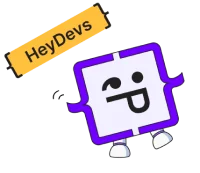
Web3: The Next Revolution of the Internet?
The internet has come a long way since its inception. From static web pages to interactive social media platforms, the digital landscape has constantly evolved.
The internet has come a long way since its inception. From static web pages to interactive social media platforms, the digital landscape has constantly evolved. Now, a new concept is emerging, promising to reshape the very fabric of the internet: Web3. But what exactly is Web3, and is it truly the next revolution?
Understanding the Evolution: Web 1.0 vs. Web 2.0
To grasp the essence of Web3, it's essential to understand the previous iterations. Web 1.0 was the era of static web pages, where users were primarily consumers of information. Web 2.0 brought about interactive platforms, user-generated content, and social media, transforming users into active participants. However, this era also led to centralized platforms controlling vast amounts of user data and content.
Web3: A Decentralized and User-Centric Internet
Web3 aims to address the limitations of Web 2.0 by introducing decentralization and user empowerment. Built on blockchain technology, Web3 envisions a world where data and content are distributed across a network, rather than being controlled by a single entity. This shift has several implications:
- Decentralization: No single entity controls the network, making it more resistant to censorship and single points of failure.
- User Ownership: Users have greater control over their data and digital identities.
- Transparency: Blockchain technology provides a transparent and auditable record of transactions and data.
- Interoperability: Different platforms and applications can seamlessly interact with each other.
The Potential of Web3: Beyond the Hype
While still in its early stages, Web3 has the potential to revolutionize various aspects of our digital lives:
- Decentralized Finance (DeFi): Web3 enables the creation of decentralized financial applications, offering greater transparency and accessibility.
- Non-Fungible Tokens (NFTs): NFTs provide a way to own and trade digital assets, opening up new possibilities for creators and collectors.
- Decentralized Autonomous Organizations (DAOs): DAOs allow communities to govern themselves through transparent and automated rules.
- Data Ownership and Privacy: Users have greater control over their data, reducing the risk of exploitation by centralized platforms.
Challenges and Considerations: Navigating the Uncharted Territory
Despite its potential, Web3 also faces challenges:
- Scalability: Blockchain networks can struggle to handle large volumes of transactions.
- Complexity: Understanding and using Web3 technologies can be complex for the average user.
- Regulation: The decentralized nature of Web3 raises questions about regulation and governance.
- Security: While blockchain is secure, vulnerabilities in smart contracts and applications can still be exploited.
The Future of Web3: Evolution or Revolution?
Whether Web3 will truly revolutionize the internet remains to be seen. However, it's clear that it has the potential to reshape how we interact with the digital world. As technology continues to evolve, Web3 may become an integral part of our online lives, empowering users and fostering a more decentralized and open internet.
Conclusion
Web3 is an exciting and evolving concept that has the potential to transform the internet as we know it. While challenges remain, the promise of decentralization, user ownership, and greater transparency is driving innovation and exploration. Whether it's an evolution or a revolution, Web3 is undoubtedly a space to watch, as it may very well shape the future of our digital interactions.





